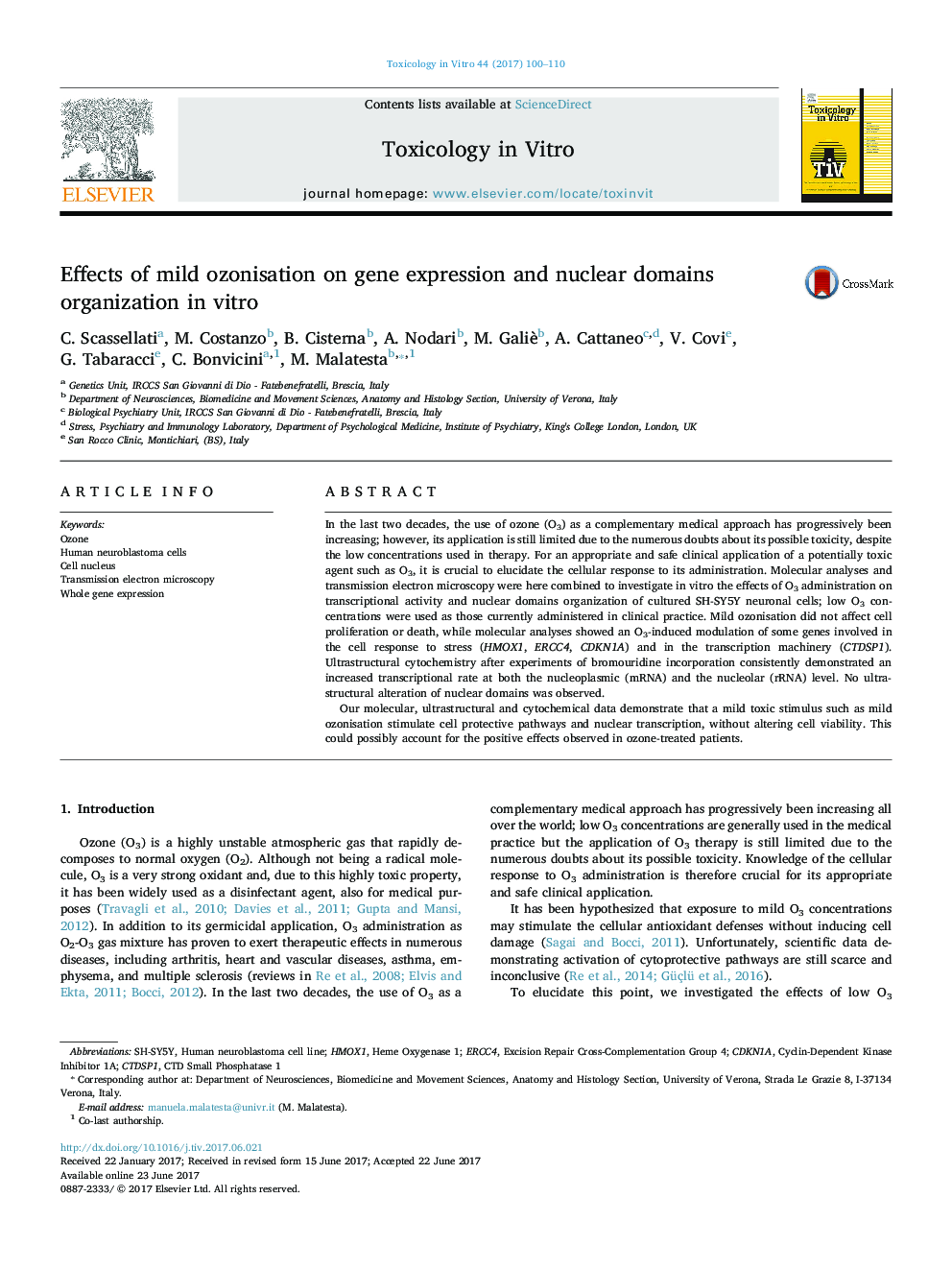| کد مقاله | کد نشریه | سال انتشار | مقاله انگلیسی | نسخه تمام متن |
|---|---|---|---|---|
| 5562520 | 1562701 | 2017 | 11 صفحه PDF | دانلود رایگان |

- Low ozone concentrations induce modulation of genes involved in cell stress response.
- Low ozone concentrations induce modulation of genes involved in RNA transcription.
- Low ozone concentrations increase the transcriptional rate.
- Low ozone concentrations do not alter the ultrastructure of nuclear domains.
In the last two decades, the use of ozone (O3) as a complementary medical approach has progressively been increasing; however, its application is still limited due to the numerous doubts about its possible toxicity, despite the low concentrations used in therapy. For an appropriate and safe clinical application of a potentially toxic agent such as O3, it is crucial to elucidate the cellular response to its administration. Molecular analyses and transmission electron microscopy were here combined to investigate in vitro the effects of O3 administration on transcriptional activity and nuclear domains organization of cultured SH-SY5Y neuronal cells; low O3 concentrations were used as those currently administered in clinical practice. Mild ozonisation did not affect cell proliferation or death, while molecular analyses showed an O3-induced modulation of some genes involved in the cell response to stress (HMOX1, ERCC4, CDKN1A) and in the transcription machinery (CTDSP1). Ultrastructural cytochemistry after experiments of bromouridine incorporation consistently demonstrated an increased transcriptional rate at both the nucleoplasmic (mRNA) and the nucleolar (rRNA) level. No ultrastructural alteration of nuclear domains was observed.Our molecular, ultrastructural and cytochemical data demonstrate that a mild toxic stimulus such as mild ozonisation stimulate cell protective pathways and nuclear transcription, without altering cell viability. This could possibly account for the positive effects observed in ozone-treated patients.
223
Journal: Toxicology in Vitro - Volume 44, October 2017, Pages 100-110